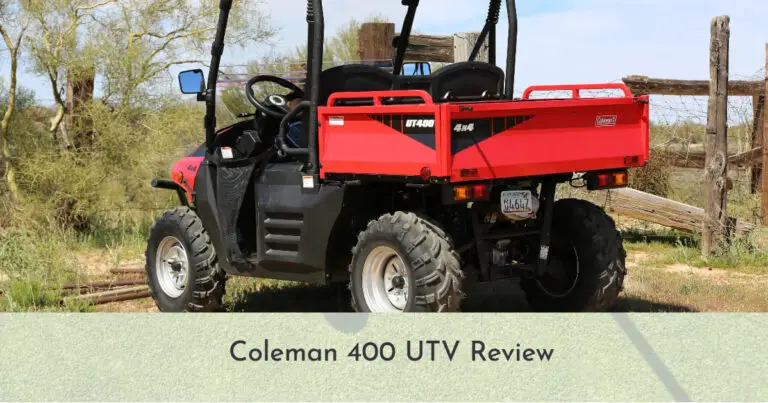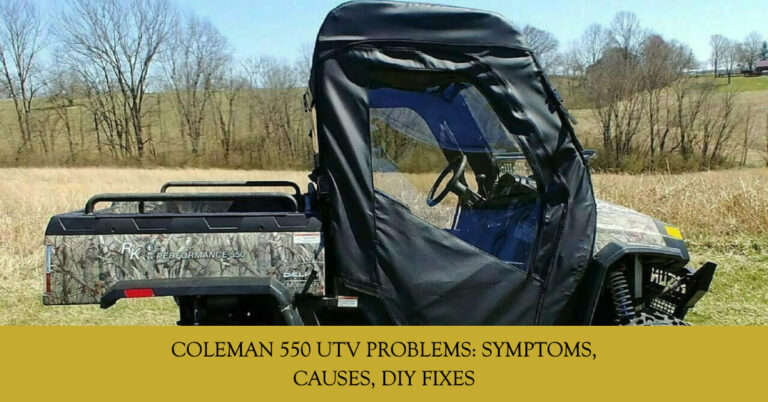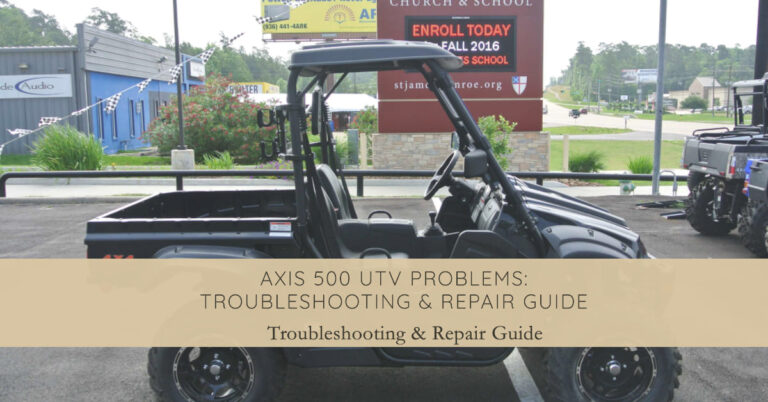Bennche Bighorn 700 Problems & Solutions – Engine, Electrical, and More

Owning and riding a Bennche Bighorn 700 utility terrain vehicle (UTV) can be an incredibly fun and exciting experience. With its powerful 700cc engine, sporty handling, and rugged off-road capability, the Bighorn 700 is built for adventure. However, as with any machine, the Bighorn 700 can develop some common problems that need to be addressed. So what are the most common Bennche Bighorn 700 UTV problems owners face, and how can you diagnose and fix them?
The good news is that many Bighorn 700 issues can be resolved with some basic troubleshooting and maintenance. In this comprehensive guide, we’ll outline the top problems that crop up in the Bennche Bighorn 700 and provide tips to get your UTV back on the trails. We’ll cover common problems with the engine, drivetrain, electrical system, brakes, and more. By knowing what to look out for and how to address it, you can keep your Bighorn 700 running strong for miles of off-road enjoyment.
Table of Contents
Engine Problems
As the powerplant of the Bighorn 700, it’s no surprise that the engine can be a source of problems. Here are some of the most common engine issues and how to address them.
Overheating
Excessive engine heat is one of the most frequent complaints among Bighorn 700 owners. An overheating engine can lead to reduced performance, engine damage if left unchecked, and even complete failure in severe cases.
What causes overheating issues on the Bighorn 700?
There are a few common culprits behind engine overheating:
- Blocked radiator – Dust, mud, and debris can build up in the radiator, restricting airflow. This reduces the cooling system’s ability to dissipate heat.
- Failed water pump – The water pump circulates coolant through the engine. If it fails, coolant flow will be compromised.
- Damaged/disconnected cooling fan – The electric fan blows air through the radiator at low speeds or when stationary. If it’s damaged or unplugged, cooling ability drops drastically.
- Low coolant level – Not enough coolant in the system hampers its ability to absorb and dissipate heat.
How to fix overheating problems:
- Thoroughly clean the radiator to remove any obstructions. Use a garden hose or compressed air.
- Replace the water pump if you suspect it’s failed. Check for leaks.
- Inspect the cooling fan for damage and check that it’s getting power. Replace if necessary.
- Top up the coolant/antifreeze mixture to the proper level if low. Pressure test system for leaks.
- Upgrade to a higher-capacity radiator if overheating persists after above steps.
Following proper maintenance like regular coolant flushes can help minimize overheating issues. Always allow the engine to fully warm up before riding to ensure proper coolant circulation.
Misfiring and Running Rough
It’s common for Bighorn 700 owners to experience occasional misfiring, sputtering, loss of power, and rough running – especially at idle. This is typically caused by ignition problems.
What can cause misfiring and rough running?
- Faulty spark plugs – The spark plugs provide the spark to ignite the fuel-air mixture in the cylinders. Worn or damaged plugs can lead to weak/inconsistent sparks and misfiring.
- Bad fuel injectors – Clogged or leaking fuel injectors affects the precise fuel metering into the cylinders, resulting in rough running.
- Broken ignition coils – The ignition coils amplify the voltage from the battery to generate a strong spark. If damaged, weak sparks and misfires follow.
- Faulty spark plug wires – Worn or cracked wires disrupt the path of the spark to the plugs.
How to fix:
- Start by replacing the spark plugs with new ones gapped to factory specifications. Use good quality plugs.
- Test the fuel injectors and replace any that are clogged or leaking. Properly clean the fuel system.
- Inspect ignition coils for cracks/damage. Replace coils as needed. Ensure connections are clean and tight.
- Check spark plug wires for deterioration and replace any in poor condition. Verify wire routing is correct.
Proper maintenance like regular spark plug changes, fuel system cleaning, and inspecting ignition components can help minimize misfires. But when problems arise, new plugs and/or coils are often needed.
Low Power
Lack of engine power is enormously frustrating in a vehicle built for speed and thrills like the Bighorn 700. There are a few key things that can sap engine performance.
What causes low power?
- Clogged air filter – A restricted air filter reduces airflow into the engine, resulting in loss of power.
- Dirty fuel injectors – Contaminated injectors lead to lean fuel mixture, less power.
- Faulty sensors – Issues with oxygen sensors, throttle position sensor and others upset fuel mapping, reducing performance.
- Exhaust obstructions – Restrictions in the exhaust system increase back pressure, choking power.
How to restore lost performance:
- Replace air filter immediately if excessively dirty. Use OEM spec filter. Check intake ducting for restrictions.
- Clean fuel injectors using quality injector cleaner or have professionally cleaned. Replace any damaged injectors.
- Test sensors (O2, TPS, MAP, etc) for proper values. Replace sensors that are out of spec.
- Inspect entire exhaust system for blockages or damage. Remove obstructions or replace damaged components.
Regular maintenance like air filter and fuel system cleaning can prevent power loss. But worn parts, sensor issues, and exhaust problems will likely require new components and professional help to address fully. Don’t ignore power loss issues.
Drivetrain Problems
As the Bighorn 700’s transmission, gearbox, driveshafts, differentials, and other components bear the stress of off-road riding, issues can develop over time. Here are some common Bighorn 700 drivetrain problems.
Grinding Noises from Transmission
Grinding noises coming from the transmission area when shifting gears is never a good sign. This typically indicates wear or damage inside the transmission or gearbox.
What causes grinding noises?
- Low transmission fluid – Insufficient lubrication lets gears slip and grind.
- Clutch not fully disengaging – Allows gears to grind when changing ratio.
- Worn/damaged gears – Broken gear teeth and excessive wear causes metal-on-metal grinding.
Fixing transmission grinding:
- Check transmission fluid level and top up if low. Look for leaks.
- Adjust clutch cable to ensure clutch fully releases. Replace worn clutch components.
- Have transmission inspected – worn gears may need replacement. Rebuild/replace transmission in severe cases.
Proper maintenance like regular fluid changes reduces wear inside the transmission. But grinding noises mean components are wearing out, so prompt action is needed.
Slipping Transmission
Does your Bighorn 700 transmission slip or seem to disengage when accelerating or under load? This typically indicates clutch or transmission issues.
What makes transmissions slip?
- Low fluid – Insufficient lubrication allows clutch plates to slip.
- Worn clutch – Plates become smoothed losing friction. Springs weaken allowing slippage.
- Worn gears/gear teeth – Excessively worn gears struggle to engage, leading to slippage under load.
Fixing slipping:
- Check fluid level and top up if required. Look for leaks.
- Replace clutch components like plates, springs, basket if worn.
- Have transmission inspected – worn gears may need replacement. Rebuild or replace transmission fully if severely worn.
Catching transmission slippage early and servicing the clutch can often prevent more serious damage necessitating transmission rebuild or replacement – an expensive repair.
Electrical System Issues
Like most machines, the Bighorn 700’s electrical system can be prone to some common problems. Here are a few issues owners may face.
UTV Won’t Start
One of the most frustrating issues is turning the key and having nothing happen – not even a click. There are a few key things that can prevent a Bighorn 700 from starting.
What causes no-start conditions?
- Dead/weak battery – If the battery lacks sufficient charge, there won’t be enough power for the starter.
- Faulty starter motor – If the starter motor itself is damaged or worn out, it may not engage and crank the engine over.
- Bad ignition switch – Issues with the ignition switch, safety interlocks, or wiring prevent power from reaching starter.
- Blown main fuse – No power due to a blown the main fuse in the wiring harness.
Getting it started again:
- Recharge or replace the battery if voltage is low. Check terminals are clean.
- Test starter motor. Tap it with a rubber mallet to unstick. Replace it if damaged internally.
- Bypass ignition switch to test. Replace switch if faulty. Inspect wiring for breaks.
- Check and replace blown main fuse in wiring harness. Address any short circuit.
Battery and electrical issues can arise over time. Basic troubleshooting and maintenance can isolate and prevent many starting problems.
Lights Not Working
It’s frustrating when your headlights, brake lights or turn signals stop illuminating when you need them most – at night or on roads. Several issues can cause lighting problems.
Why do lights fail?
- Blown fuse – Each lighting circuit has a protective fuse. Shorts or overloads blow them cutting power.
- Damaged wiring – Breaks or exposed wires short and disrupt power flow.
- Bad bulbs – Vibration causes filaments to break or bulbs burn out.
Fixing lighting problems:
- Check fuse box and replace any blown fuses. Address any wiring short circuits.
- Inspect wiring harness for damage, breaks, corrosion, etc. Repair/replace damaged wires.
- Test bulbs, replace any burned out ones. Consider upgrading to LED bulbs.
- Ensure bulbs are seated properly and making good contact. Clean any corrosion.
Thoroughly inspecting connections, wires, fuses, and bulbs can isolate most lighting issues. Carry spare fuses, bulbs, and tools to make trailside repairs if needed.
Brake Problems
Braking problems present major safety concerns. Slowing and stopping issues must be addressed immediately before continuing riding.
Brakes Feel Spongy/Weak
Brakes are a key safety system – you need to be able to stop confidently. Spongy or weak brakes are indicators of problems in the hydraulic system.
What causes soft/weak brakes?
- Air in brake lines – Air compresses slightly rather than transmitting full braking force.
- Worn brake pads – Less friction material contacts the rotor reducing stopping power.
- Brake fluid leak – Low fluid levels mean less pressure applied at calipers.
Fixing soft brakes:
- Bleed brake system to remove any air in lines. Top up fluid level.
- Replace brake pads if worn down close to limit. Inspect rotors.
- Inspect brake lines, seals, and pistons for leaks. Repair/replace as needed.
- Adjust caliper piston retraction if not fully releasing brake pad.
Proper bleeding and fluid changes will minimize air and leaks in the system. Worn consumable parts like pads and rotors require periodic replacement as well.
Pulling to One Side
Does your Bighorn 700 pull or drift heavily to one side when braking? This indicates an imbalance in braking that needs correction.
What causes pulling brakes?
- Uneven pad wear – More worn pads on one side brake with less force.
- Sticking caliper piston – Prevents pad retracting, causing drag on one side.
- Warped brake rotors – Rotor wobbles under braking, pulling one way.
Correcting brake pull:
- Replace brake pads as sets to restore even braking.
- Clean and lubricate caliper pistons so they fully retract. Consider rebuilding calipers.
- Resurface or replace warped rotors to eliminate wobble/pulsing under braking.
- Ensure mounting hardware is snug. Inspect wheel bearings for play.
Monitoring pad wear and servicing calipers is key to preventing uneven braking. Quality parts also reduce the likelihood of sticking, leaks, and warping.
Conclusion
While the Bennche Bighorn 700 is well-engineered, problems can arise with its engine, drivetrain, electrical system, braking, and other components – especially if maintenance is neglected. However, most issues can be resolved with some basic troubleshooting and repairs like:
- Cleaning the radiator, replacing coolant parts to address overheating
- Replacing spark plugs, coils, sensors to fix ignition issues
- Changing air filter, cleaning injectors, inspecting sensors to restore lost power
- Topping up transmission fluid, adjusting clutch, replacing gears to stop grinding
- Charging or replacing battery, testing starter motor to get UTV starting again
- Replacing fuses, bulbs, wiring to restore lighting function
- Bleeding brakes, replacing pads/rotors, rebuilding calipers to improve braking
Routine maintenance goes a long way towards preventing problems in the first place. But knowing the common Bighorn 700 issues and solutions outlined here will keep you confidently ripping across the dunes or trails.







